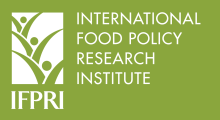Resource information
This paper attempts to assess the impact of trade liberalization on growth, poverty, and food security in India with the help of a national-level computable general equilibrium (CGE) model. The results show that the gross domestic product (GDP) growth and income-poverty reduction projected to occur following trade liberalization do not necessarily improve the food security and/or nutritional status of the poor. Evidence from simulations of (partial) trade reforms reflecting a possible Doha-like scenario show that the bottom 30 percent of the population in both rural and urban areas would suffer a decline in calorie and protein intake, in contrast to the rest of the population, even as all households increase their intake of fats. The food security / nutritional status outcome with regard to individual nutrients depends crucially on movements in the relative prices of different commodities along with changes in income levels. These results show that trade policy analysis should consider indicators of food security in addition to the overall growth and poverty measures traditionally considered in such studies.


